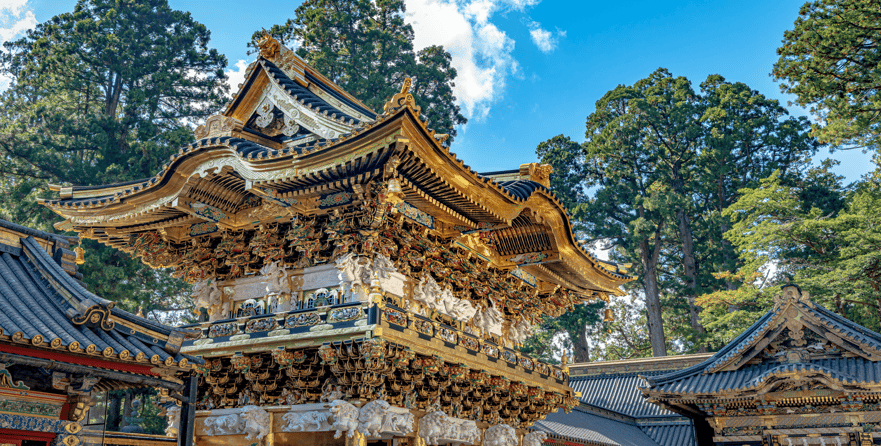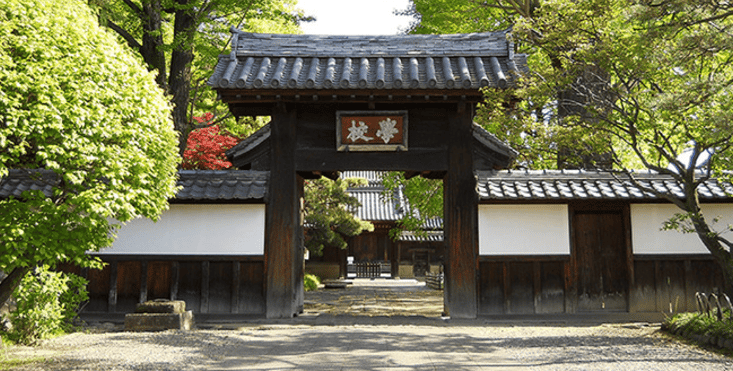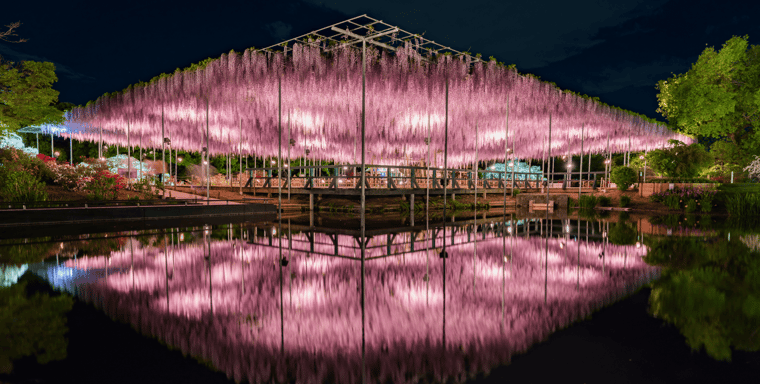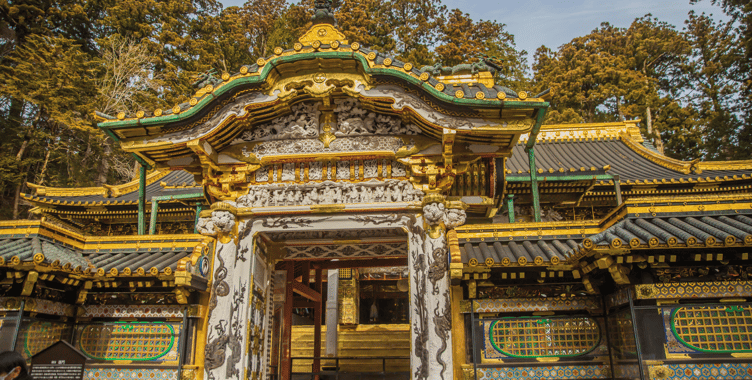🕓 2024/9/16
#観光地

What is Tochigi Prefecture?
Located in the Kanto region of Japan, Tochigi Prefecture is a captivating area where grand nature and rich history harmonize. Known as a sacred site for Shugendo since ancient times, historical families such as the Utsunomiya and Satake flourished during the medieval period. Their historical footsteps still breathe in local cultural heritage such as the Tochigi Festival and the ruins of Utsunomiya Castle.
The vibrant scenery of Tochigi Prefecture, which changes with each season, mesmerizes its visitors. The breathtaking natural views of Nikko and the grand architecture of Nikko Toshogu, a World Heritage site, underscore its visual appeal. The beauty of this place transforms through the seasons: fresh green in spring, deep green in summer, autumn leaves in fall, and snowscapes in winter, presenting different expressions each time you visit.
Furthermore, Tochigi Prefecture is known for its delicious local specialties like Tochigi Wagyu and Nikko strawberries. Dishes made with these flavorful ingredients delight the taste buds of those who visit and offer a way to experience the culture of the area.
Three Selected Tourist Destinations in Tochigi Prefecture
1. Ashikaga School Ruins

● Attractions
Ashikaga School Ruins, known as one of Japan's oldest schools, was designated as a national historic site in the Taisho era (1912-1926). Visitors can experience the rich history from the Muromachi period, especially as it was renowned as the "University of Eastern Japan" during the Edo period. Today, the restored buildings and gardens allow visitors to immerse themselves in the traditional atmosphere of Japanese academia.
The site features classical architecture, a Confucian temple honoring Confucius, and a library with valuable books. The spirit of Ashikaga School as an educational origin continues to inspire and educate visitors.。
● History
The establishment of Ashikaga School has several theories, but historical records confirm its revival in 1439 by the Kanto regional governor Uesugi Norizane. Despite the turmoil after the Onin War, the school continued its academic activities, especially flourishing during the Warring States period.
After concluding its role at the end of the Edo period, the school was cherished as a regional symbol and was restored in 1990.。
● Access
- Address: 2338 Shoheicho, Ashikaga City, Tochigi Prefecture
- Access:
- 10 minutes walk from JR Ryomo Line "Ashikaga Station"
- 15 minutes walk from Tobu Isesaki Line "Ashikaga City Station"
- 15 minutes by car from Ashikaga Interchange on the Kita-Kanto Expressway
- Nearest bus stops: Ashikaga School East, Toriichi-chome
- Parking Information:
- Ashikaga School Multipurpose Parking Lot: 8 cars, free
- Taiheiki-Kan Tourist Parking Lot: 40 cars, 10 large buses, free
- Taka-Uji-Kun Plaza Parking Lot: 35 cars, free
- Toriichi-chome Multipurpose Plaza: 39 cars, free (limited to 3 hours parking)
- Google Maps Link: Ashikaga School Ruins
2. Ashikaga Flower Park

● Attractions
Ashikaga Flower Park in Tochigi Prefecture is a mesmerizing spot where a variety of flowers bloom throughout the seasons across its vast grounds. The park is especially famous for its magnificent wisteria trellises in spring, with an enchanting nighttime illumination. The 80-meter long white wisteria tunnel is a particular highlight. From late October to early February, the park hosts one of Japan's top three illuminations, "The Garden of Light Flowers," attracting families and couples.
The "Miraculous Wisteria," over 150 years old, was cited by CNN as one of the "World's Top 10 Dream Travel Destinations (2014)" for its resemblance to the "Tree of Souls" from James Cameron's movie "Avatar"。
● History
The origin of Ashikaga Flower Park dates back to the 1920s, when the father of the park's owner planted a large wisteria in the corner of his garden. In 1968, the park was opened to the public as Hayakawa Farm, and in 1996, four large wisteria plants were relocated to their current location.
The relocation was successfully carried out by Konami Tsukamoto, Japan's first female arborist. The park's spring illumination and light-up have been designated as a "Japanese Night View Heritage," a first for any facility in the country to receive multiple recognitions in this category. The park is also a renowned "Lovers' Sanctuary"
● Access
- Address: 607 Hasamacho, Ashikaga City, Tochigi Prefecture
- Contact: Ashikaga Flower Park Tel: 0284-91-4939
- Business Information: Operating hours 10:00 - 17:00, varies by season
- Closed Days: 3rd Wednesday and Thursday of February, December 31
- Admission Fees: Adults: 400 - 2,100 yen / Children: 200 - 1,100 yen, varies depending on the flowering condition
- Access:
- By train & bus: About 3 minutes walk from JR Ryomo Line Ashikaga Flower Park Station
- By car: 15 minutes from Ashikaga IC on Kita-Kanto Expressway, 18 minutes from Sano-Fujioka IC on Tohoku Expressway
- Parking Information: 40 large buses, 300 cars, free
- Google Maps Link: Ashikaga Flower Park
3. Nikko Toshogu Shrine
● Attractions
Nikko Toshogu Shrine, located in Nikko City, Tochigi Prefecture, enshrines Tokugawa Ieyasu, the first shogun of the Edo period, as Toshogu Daigongen. It is considered the head shrine among Toshogu shrines nationwide and is one of the three major Toshogu shrines, along with Kunozan Toshogu and Ueno Toshogu. As part of "Shrines and Temples of Nikko," it is a UNESCO World Cultural Heritage site, attracting many worshipers and tourists from both within Japan and overseas.
The shrine's luxurious and splendid structures befitting the hero who ended the Warring States period captivate visitors. The shrine complex boasts 55 buildings, including 8 national treasures and 34 important cultural properties, mostly built in the early Edo period, showcasing the craftsmanship of lacquering and carving by master artisans of the time.
>>For more information on Nikko Toshogu Shrine, click here
● History
The history of Nikko Toshogu began based on the will of Tokugawa Ieyasu, who died in 1616. Initially entombed in Kunozan in 1616, his remains were relocated to Nikko the following year. Ieyasu wished to protect the peace of Japan as a guardian deity from the position of the immovable North Star, ensuring the prosperity of the Tokugawa Shogunate and everlasting peace in Japan.
The 9.2m tall stone torii gate at the entrance, Japan's largest, was donated in 1618 by Kuroda Nagamasa, the first lord of the Fukuoka Domain. In 1634, the third shogun, Tokugawa Iemitsu, visited Nikko, initiating a major renovation to transform the shrine into a magnificent complex.。
● Access
- Address: 2301 Sannai, Nikko City, Tochigi Prefecture
- Access:
- By train: About 1 hour 50 minutes from Asakusa on Tobu Nikko Line (Limited Express Kegon), about 2 hours from Shinjuku on JR Limited Express Nikko, about 45 minutes from Utsunomiya on JR Nikko Line
- By car: About 2km from Nikko IC on the Nikko Utsunomiya Road via the Tohoku Expressway Utsunomiya IC
- Parking Information:
- Cars: 600 yen
- Microbuses: 1,200 yen
- Large buses: 2,000 yen
- Car parking available for 200 vehicles; reservations required for microbuses and large buses 7 days in advance
- Contact: Nikko Toshogu Parking Lot Tel: 0288-54-0560
- Google Maps Link: Nikko Toshogu Shrine
- Official Website: Nikko Toshogu Official Website

